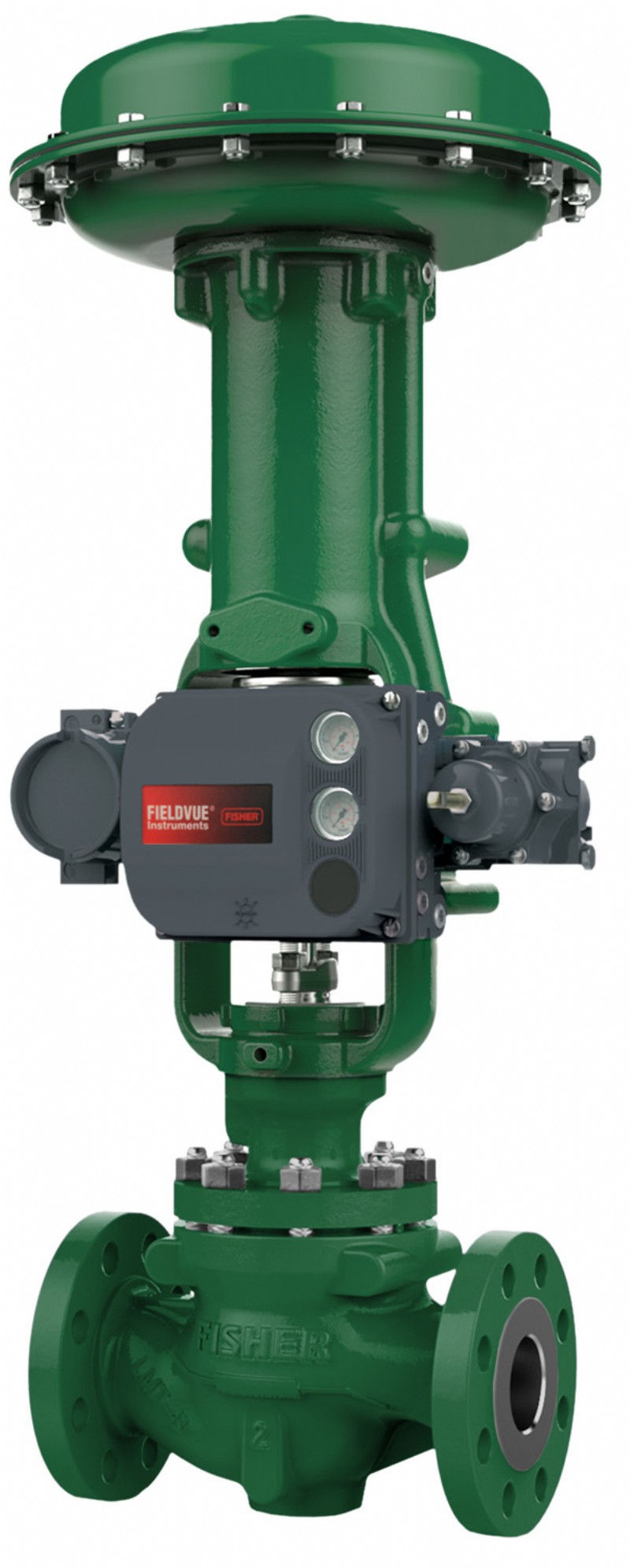Finding Hidden Cost Savings in Control Valve Selection

Modern valve technologies, such as this Fisher FIELDVUE Digital Valve Controller 6200, can help power plants reduce costs by providing valve health and performance diagnostics.
Through careful initial valve selection, attention to maintenance, and adapting to changes in plant operating modes, control valves can make big contributions to reduced running costs.
Many control valves are initially selected on a series of limited service conditions often exaggerated at each stage of the plant design as an operational safety margin. Selecting valve assets under these pretenses means plant operators are increasing their initial costs on over-specified valves that will often be operating under 25 percent open in normal operation.
In these cases, the valves are operating outside their optimum range at the extreme minimum and maximum conditions, making control at lower flows more difficult. In addition to poor flow control, because of changes in operating regime, plants may experience severe damage to valve trims, leading to increased leakage rates. Operating under these conditions can also lead to flow cavitation and can even damage valve assets enough to require frequent valve replacement.
Proper valve selection begins by taking into consideration specific needs and operating cycles of the type of power plant in which the valves will be utilized. Valve selection for a base load power plant, for example, can be very different from a plant running through multiple start/stops cycles per day. The startup phase of operational cycles creates challenging conditions for valve components with high pressure drops and low flow rates.
Daily startups compared to occasional startups will dictate which control valve and trims are appropriate for these environments. Additionally, long term tight shutoff capabilities are crucial to achieving performance targets for valves serving critical functions, such as boiler water level control, turbine bypass and steam vents.
Power plant operators working through the challenges of improper initial valve selection can avoid repeating the problem. By resizing the valve to real-life service conditions, operators can work with a main valve partner to tailor the trim geometry to the actual service conditions, paying special attention to startups with low flows and high pressure drops to prevent cavitation.
Advancements in smart valve technology have also enabled remote monitoring of valves in service, giving operators the opportunity to monitor control valve health and performance through regular diagnostics. Emerson’s Fisher™ FIELDVUE™ Digital Valve Controller 6200 and FIELDVUE™ Digital Valve Controller 2000, for example, provide valve health information by monitoring live data from the valve or by performing online performance diagnostics when the plant is running.
This steady stream of data helps ensure the valves are working at peak performance and can help develop preventive maintenance planning.
Thus, valve lifecycle increases, as well as process control and operational certainty.
To learn more about Emerson’s Fisher flow control technologies, visit:- https://www.emerson.com/en-us/automation/fisher
Tel: 0161 406 5241
Email: uksales@emersonprocess.com
Web: www.emerson.com/en-us/automation/fisher

| Telephone: | 0161 7907741 |
| Email: | uksales@emerson.com |
| Website: | www.emerson.com/en-gb |
| More information on the Emerson Sales UK Ltd BVAA Member Directory Page |
Search related valve / actuator articles: Emerson Sales UK LtdIssue 45ValvesControl Valves







-web.jpg)





